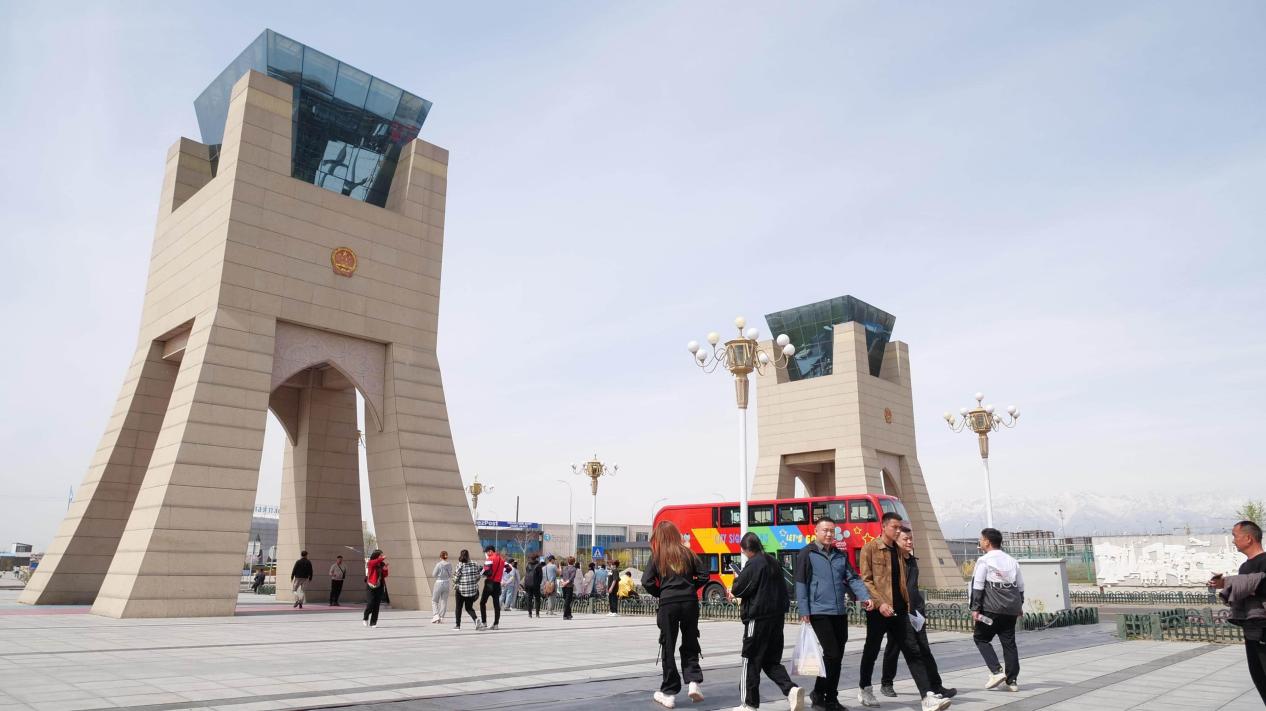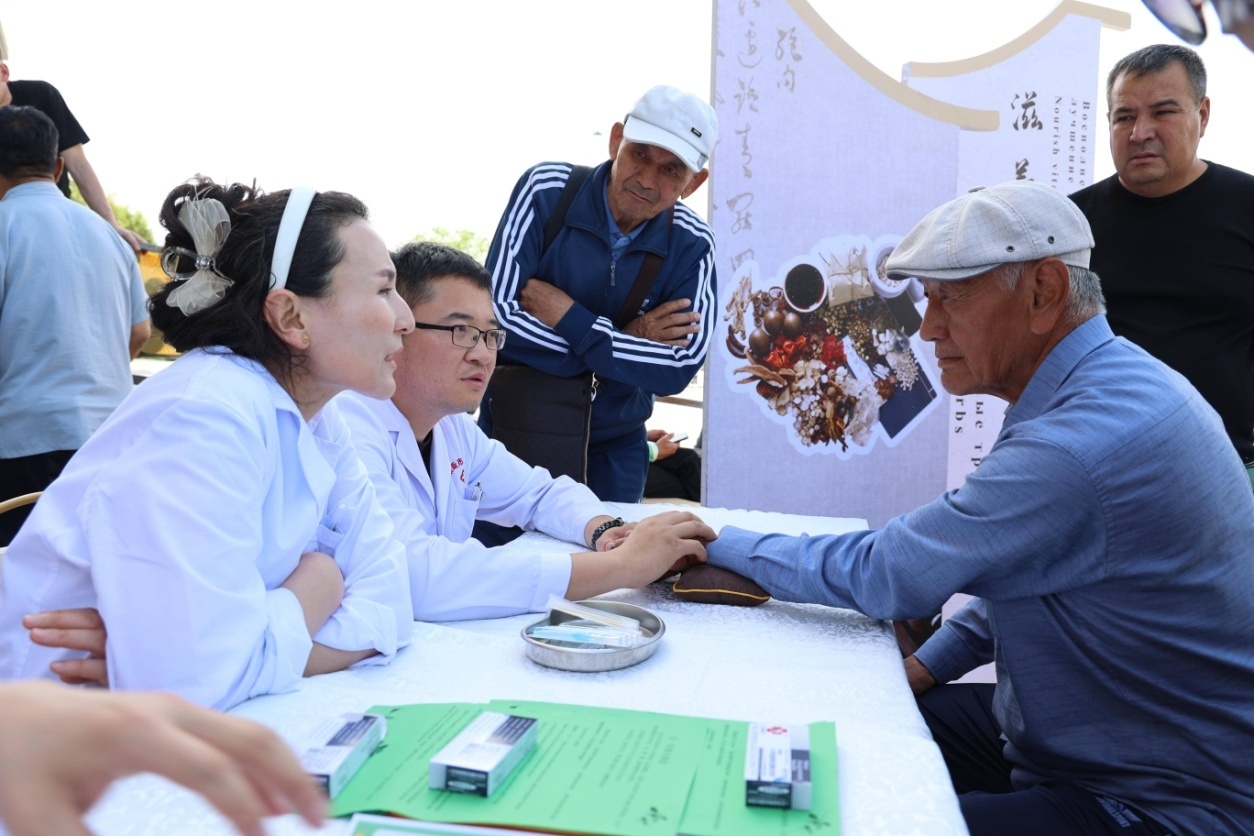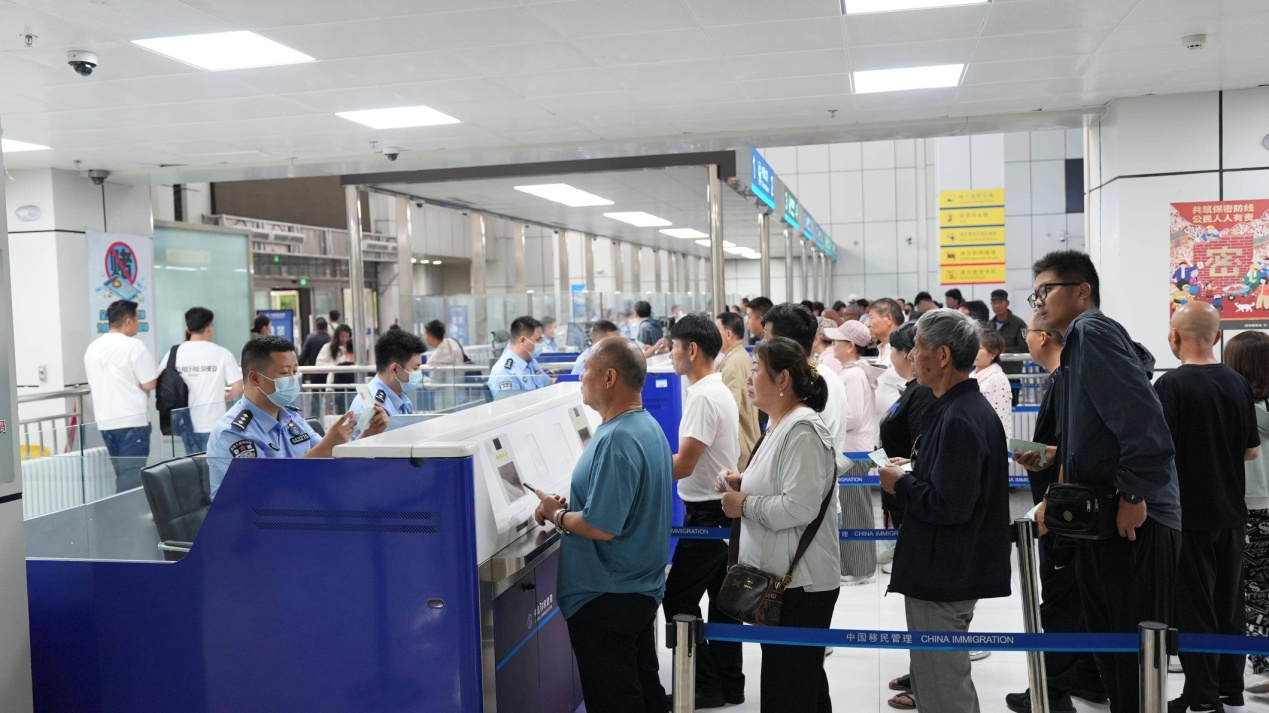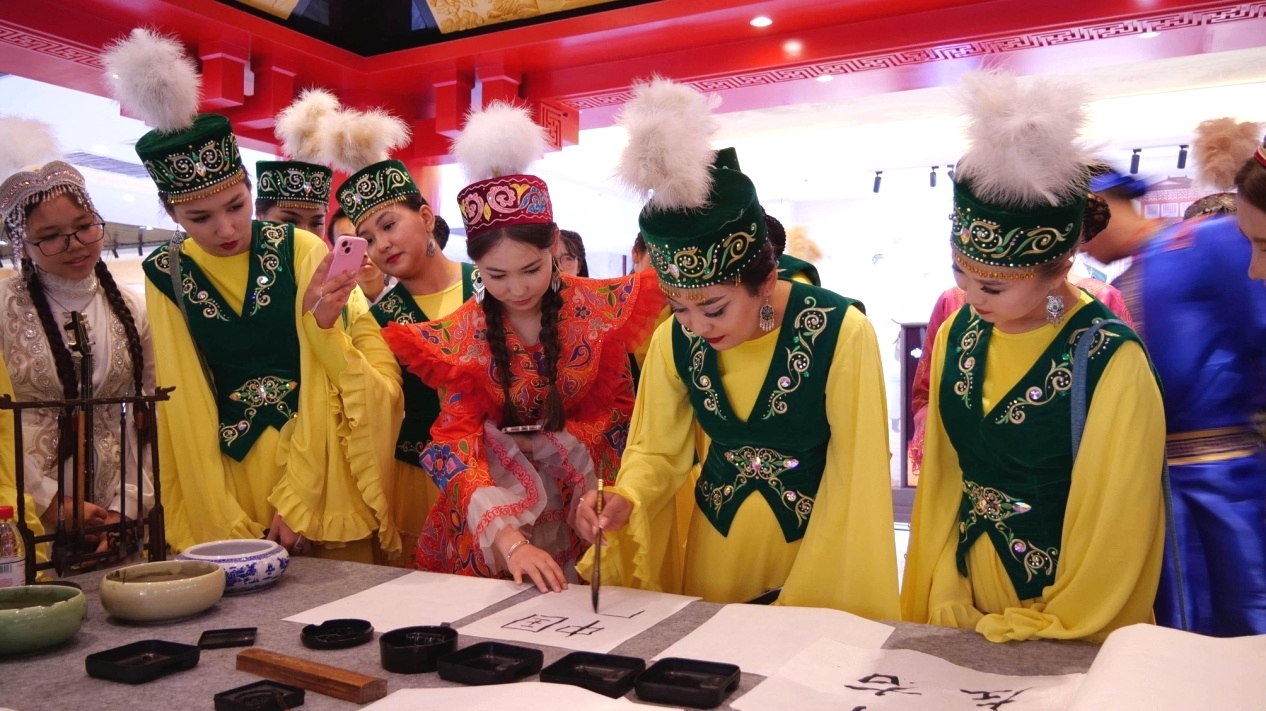Horgos in Xinjiang brings border crossing into daily life

Photo shows the China-Kazakhstan connecting corridor inside the Horgos International Border Cooperation Center. (Photo/Wu Zhiheng)
Horgos, located in the Ili Kazakh autonomous prefecture of northwest China's Xinjiang Uygur autonomous region, lies directly on the border with Kazakhstan. Once a vital stop along the northern route of the ancient Silk Road, it has become an important gateway for China's opening up to the west.
In 2012, the Horgos International Border Cooperation Center, comprising adjoining border areas on both sides of the boundary, was officially put into operation. It is China's first cross-border economic cooperation zone established with another country. Leveraging its strategic location and preferential policies, the center has accelerated trade, cultural exchanges, and people-to-people connectivity between China and Kazakhstan.
At around 10 a.m., 67-year-old Horgos resident Li Guoliang, accompanied by his wife and granddaughter, joined the steady flow of people moving through the checkpoint. "We're going over to buy some daily necessities," he explained.
Their destination was the Horgos International Border Cooperation Center, where both sides are physically linked while retaining separate entry and exit systems. Citizens of both countries, and travelers from elsewhere, can enter visa-free with a passport or border pass.

A free clinic is held by the Khorgos People's Hospital at the China-Kazakhstan connecting corridor inside the Horgos International Border Cooperation Center. (People's Daily/Huan Xiang)
Having lived in Horgos his entire life, Li often visits the center. "Going abroad is like visiting relatives - it's that convenient," he said. A walk of just 15 minutes inside the center leads to a China-Kazakhstan connecting corridor, where visitors can cross directly into Kazakhstan. Many tourists have dubbed it the "one-sec\ passage."
Today, the center is home to more than 5,000 shops and about 1,200 businesses, selling over 1,000 types of goods from more than 40 countries, from Kazakh honey and Kyrgyz wool blankets to Uzbek dried fruits. It has grown into the largest cross-border tourism and shopping hub in northwest China. Chinese-made appliances, furniture, and clothing are shipped from here to Central Asia, West Asia, Europe, and beyond. This year alone, the center has already recorded over 6 million entries and exits, a year-on-year increase of 66 percent.
By midday, the aroma of freshly baked food filled the air at the bustling Dilnaz Restaurant. In the kitchen, Toktabayeva from Kazakhstan packed golden, crispy baked buns into meal boxes, while her partner Gulshala, a Horgos local, bagged orders with practiced speed. The two women run the restaurant together, calling it a "cross-border restaurant" and treating each other like sisters.

Visitors enter the Horgos International Border Cooperation Center. (Photo/Li Ming)
"Now that China and Kazakhstan have mutual visa exemptions, it's even easier for our people to visit each other. Going to the other country truly feels like 'going home,'" Toktabayeva said.
In a classroom at the Horgos Yiwu International Business Trade Mall, students from the International Kazakh-Chinese Language College sat in a circle, reading aloud Chinese business phrases written on the blackboard: "Carefully selected," "Great bargain," "Real deal."
This April, as the first group of trainees in the Horgos Area of the China (Xinjiang) Pilot Free Trade Zone, they began internships at local businesses while also studying cross-border e-commerce and international trade in Chinese.
Eighteen-year-old Kazakh student Chepasova Rufina has been learning both the language and livestreaming commerce. "My Chinese teacher taught me how to interact with viewers and enhance the user experience. When I first came to China, I only knew a few basic greetings. Now I can confidently sell products in Chinese," she said. "I hope to make more Chinese friends and introduce more quality products from Kazakhstan to China, and Chinese products to Kazakhstan."

Chinese and Kazakh youths join a cultural exchange event in the Chinese pavilion at the Horgos International Border Cooperation Center. (Photo/Shui Chengfan)
Meanwhile, the National Gate Hospital, run by Horgos People's Hospital, was busy hosting a free clinic. Liu Fei, an attending physician from the Ili Kazakh Autonomous Prefecture Traditional Chinese Medicine Hospital, treated patients alongside his colleagues.
Rahimjan, a Kazakh patient long troubled by migraines, decided to try acupuncture after Liu's pulse diagnosis. "In Kazakhstan, I often heard people say that traditional Chinese medicine (TCM) works well. Today, I tried it myself and felt very comfortable," he said, giving a thumbs-up.
Liu noted that more and more Kazakh people are seeking out TCM to improve their health and quality of life. "We hope TCM can bring health to more people and serve as a bridge of friendship," he said.
In recent years, Horgos has advanced its international medical service capabilities, experimenting with cross-border medical insurance mechanisms and expanding access to both Chinese and foreign patients. It aims to become an international medical service center serving Central Asia.
In July 2023, Horgos People's Hospital was officially authorized to provide foreign-related medical services. Between January and June this year, the hospital treated 205 foreign patients, held 54 free clinic events, and provided free check-ups and diagnoses for 1,035 people.
In Horgos, from the border cooperation center to vocational training and international medical services, the "one-sec border passing" has become more than just a convenience. It is weaving deeper emotional bonds, closer friendships, and a shared sense of community across the China–Kazakhstan border.
Photos
Related Stories
- China's Xinjiang holds intangible cultural heritage exhibition
- View of Tuancheng of Hotan City, China's Xinjiang
- Ancient Kuqa in NW China's Xinjiang sees cultural tourism boom
- Hami melons now available year-round thanks to intelligent platform
- View of wetlands in China's Xinjiang
- Pic story: director of power supply station in Zhaosu County, China's Xinjiang
- In pics: Wuluwat water conservancy project in China's Xinjiang
- Kunlun Mountains scenic area in NW China's Xinjiang attracts visitors during summer vacation
- Intangible heritage aroma in Xinjiang: Experience crafting nang in Hami's ancient streets
- Intangible cultural heritage breathes new life into traditional villages in Turpan, NW China's Xinjiang
Copyright © 2025 People's Daily Online. All Rights Reserved.









